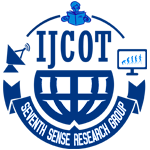Development of the Effort Estimation Model Using Fuzzy Decision Tree
Citation
Amit Kumar, Sumeet Kaur Sehra, Dr. Yadwinder Singh Brar, Dr. Navdeep Kaur"Development of the Effort Estimation Model Using Fuzzy Decision Tree", International Journal of Computer & organization Trends (IJCOT), V5(2):92-97 Mar - Apr 2015, ISSN:2249-2593, www.ijcotjournal.org. Published by Seventh Sense Research Group.
Abstract In the field of software engineering, the way of Effort Estimation consists of two steps working phenomenon, first one is for the development of the estimation model for the current dataset or repository and the second one is towards the reliability of this developed model. Effort Estimation can be elaborated in terms of a required managerial activity to estimate the realistic and accurate amount of effort(expressed normally in Person- Hours, Person-Month) for the project or the set of projects. It’s also defined as efficiency that relies on the realistic utilization of the amount of modality or resources in the development of projects. In our work, we selected an integrated concept i.e. Fuzzy concept with Decision Tree to estimate the effort. Triangular membership function is used to quantify the attributes of Desharnais dataset and C4.5 decision tree is used to develop the effort model. Normally, if we apply C4.5 Decision tree on such large datasets without any tool then it took 3 to 4 month to construct an effort model, we have tried weka tool for this dataset but this tool only supports categorical target class so we made a tool ‘C4.5 data statics calculator’ which takes an excel dataset file as an input and induces a decision tree. The result from C4.5 decision tree is compared to all the methods that have been applied to this dataset in past. By our work, we found that C4.5 decision tree gives far better estimation model than other models.
References
[1] Basavaraj M. and Shet K. (2008), "Empirical validation of Software development effort multipliers of Intermediate COCOMO Model", Journal of Software, vol. 3, NO. 5, ISSN: 1796-217X, pp. 65-71.
[2] Lijin B. and Malathi S. (2014), "An Efficient Method for the Estimation of Effort in Software Cost", International Journal of Advance Research in Computer Science and Management Studies, Vol. 2, No. 2, ISSN: 2321-7782, pp. 330-335.
[3] Capretz L., HO D., and Nassif A. (2012), "Analyzing the Non- Functional Requirements in the Desharnais Dataset for Software Effort Estimation", 11th International Conference for Upcoming Engineers (ICUE), DOI: 10.1186/1687-3963-2013-1.
[4] Fisher D. and Srinivasan K. (1995), "Machine Learning Approaches to Estimating Software Development Effort", IEEE Transactions on Software Engineering, vol. 21, NO. 2, ISSN: 0098-5589, pp. 126-137.
[5] Ferrucci F., Gravino C., Oliveto R. and Sarro F. (2010), "Genetic Programming for Effort Estimation: an Analysis of the Impact of Different Fitness Functions", 2nd International Symposium on Search Based Software Engineering, DOI 10.1109/SSBSE.2010.20, pp. 89-98.
[6] Chiu N., Haung S. and Lin C. (2006), "Fuzzy Decision Tree Approach for Embedding Risk Assessment Information into Software Cost Estimation Model", Journal of Information Science and Engineering, ISSN: 1016-2364, pp. 297-313.
[7] Elyassami S. and Idri A. (2011), "Applying Fuzzy ID3 Decision Tree for Software Effort Estimation", International Journal of Computer Science Issues, vol. 8, NO. 4, ISSN: 1694-0814, pp. 131-138.
[8] Garcia S., He F.,Luengo J. and Saez J. (2013), "A Survey of Discretization Techniques Taxonomy and Empirical Analysis in Supervised Learning", IEEE Transactions on Knowledge and Data Engineering, vol. 25, NO. 4, ISSN: 0098-5589, pp. 734-750.
[9] Batra G. and Trivedi M. (2013), "A Fuzzy Approach for Software Effort Estimation", International Journal on Cybernetics & Informatics, vol. 2, NO. 1, ISSN: 1694-0784, pp. 9-15.
[10] Quinlan J. (1986), "Induction of Decision Trees", Kluwer Academic Publishers, pp. 81-106.
[11] Erritali M., Ezzikouri H., Hssina B. and Merbouha A. (2014), "A comparative study of decision tree ID3 and C4.5", Special Issue of International Journal of Advance Computer Science and Applications, vol. 3, NO. 10, ISSN: 2156-5570, pp. 13-19.
[12] Bowyer K., Chawla N., Hall L. (1998), "Combining Decision Trees Learned in Parallel", Distributed Data Mining Workshop at International Conference of Knowledge Discovery and Data Mining, DOI: 10.1145/347090.347091.
[13] Schofield C. and Shepperd M (1997), "Estimating Software Project Effort Using Analogies", IEEE Transactions on Software Engineering, vol. 23, NO. 12, ISSN: 0098-5589, pp. 736-743.
[14] Desharnais J., Finnie G. and Witting G. (1997), "A comparison of Software Effort Estimation Techniques”, Elsevier Science Inc., ISSN: 0164-1212, pp. 281-289.
[15] Lefly M. and Shepperd M. (2003), "Using Genetic Programming to Improve Software Effort Estimation Based on General Data Sets", The Genetic and Evolutionary Computation Conference, DOI: 10.1017/S1351324908004919, pp. 2477-2487.
[16] Raju K. and Reddy S. (2009), "An Improved Fuzzy Approach for COCOMO’s Effort Estimation using Gaussian Membership Function", Journal of Software, vol. 4, NO. 5, ISSN: 1796-217X, pp. 452-459.
[17] Malathi S. and Sridhar S. (2012), "Estimation of Effort in Software Cost Analysis for Heterogeneous Dataset using Fuzzy Analogy", International Journal of Computer Science and Information Security, vol. 10, NO. 10, ISSN: 1947-5500.
[18] http://promise.site.uottawa.ca/SERepository/datasets/desharnais.arff
Keywords
Decision making, fuzzy logic, fuzzy set., membership function, weka j48, machine learning, entropy, information gain, gain ratio, C4.5 decision tree.



